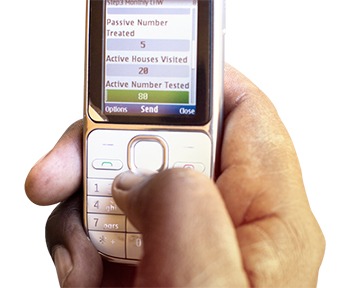
Credit: Malaria No More
Two months have passed since the United Nations ratified the Sustainable Development Goals (SDGs) which aim to eradicate poverty by 2030. The goals are lofty and include everything from equality of the sexes to ending hunger. Data that accurately reflects the progress being made towards achieving the SDG’s is going to be critical if each objective is to be met by the target date. As many as 350 million people in need, however, are virtually invisible to the international community because they are not represented by statistics. A third of the world’s births and two-thirds of the world’s deaths and their causes, for example, go unreported, and statistics about the number of people living in extreme poverty are out of date.
Technology and innovation are critical to enhancing data collection and analysis to the extent necessary to close the data gap. This is a time rich with opportunity to develop and harness new ways to use technology to capture and transfer data. From monitoring infectious diseases to supporting refugees along their journeys, a myriad of organizations are catching on to the power of data.
Global Washington member Malaria No More (MNM) is utilizing technology to change how diseases are tracked. One program employed by MNM, SMS for Life, is an innovative public-private partnership that lets health systems manage their supply chain using real-time data. SMS for Life allows hospitals to more quickly prepare medical supplies so that when a patient arrives at a clinic, everything is ready. The program uses a combination of mobile phones, SMS messages, the Internet and electronic mapping to track weekly stock at public health facilities. By using mobile tools, MNM can provide stronger healthcare for those living in rural areas.
Innovations in data technology allow at-risk populations to take control of their own well-being. This past September, Google, the International Rescue Committee (IRC) and Mercy Corps teamed up to launch refugeeinfo.eu. The website provides all of the vital information Syrian refugees need when they land in Greece. By visiting the site, refugees can learn about the registration process, find out where they can eat or sleep, and learn where to get medical help. A slew of other websites provide up-to-date information about factors such as the state of key border crossings. These sites warn people of how, for example, Hungary sealed the country’s southern border with razor wire. Amidst the chaos, such websites are keeping refugees safe through the power of information.
Technology has the potential to help foster and advance relationships between NGOs, businesses and those in need. At-risk populations utilize data tools, which then provides additional statistics to those developing the technology, who can then provide more accurate numbers to those in need. From the fight against malaria to the Syrian refugee crisis, technology provides life-saving knowledge, and allows organizations to stand by people in need even when they cannot be physically present.